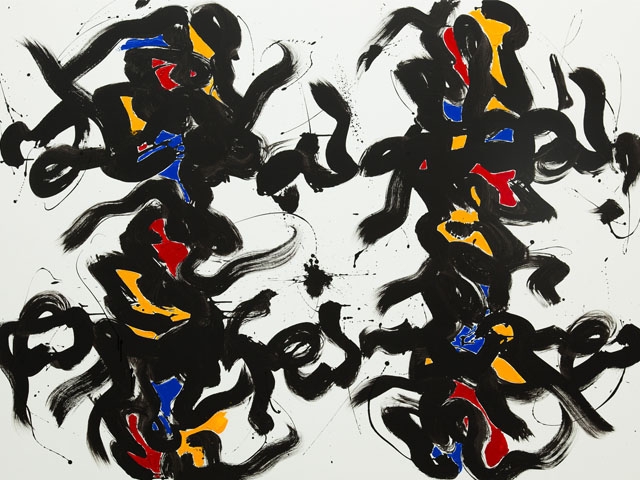Traditional and Today’s Islamic Calligraphy
VIEW EVENT DETAILSRoaring Guardians: The Mari-Cha Lion and Other Traditional and Contemporary Asian Art Educational Offerings

Registration: 6:15pm, Presentation: 6:30pm
Close: 7:30pm
Language: English
The art of calligraphy is one of the reputable and famous art in the Islamic region including Iran. Most of the handwritten books of Iran, such as the Holy Qoran and poems, have been recognized as precious artistic works because of their graceful and delicate calligraphy. No other country like Iran have various calligraphy to enrich and beautify earthen-ware, vessels and their historic buildings. Without the decorative calligraphy, the Iranian arts is not completed nor perfect.
The calligraphy works of virtuous Iranian calligraphers are preserved as precious artworks in museums and private collections. The art of calligraphy in Iran has a long history, which includes the opposition of writing in Iran and its process of evolution from the ancient times till the Islamic period, and present time.
In this presentation, Iranian artist Golnaz Fathi will give a brief knowledge and the history of Islamic calligraphy from Kufic till today, and the artistic use in contemporary art. Fathi will also give a presentation of her artwork: from where she starts, and what she has done with calligraphy in her painting. This presentation is moderated by Daniela Cecutti.
Golnaz Fathi is a trained calligrapher. She has the ability to skillfully transform known language into form and composition. Having discovered calligraphy while studying graphic design at Tehran’s Azad University, she later left to train at the Calligraphy Association of Iran for six years. Fathi was the first woman to win an award for Ketabat, a distinct genre of calligraphy. She soon tired of the discipline’s rules and regulations and thus created a new form of expression in her paintings: an imaginary language deeply rooted in Persian tradition while simultaneously hinting at a social renaissance. Her paintings carry traces of meaning that have no known coded alphabet. The strength of her work stems from the drive to express emotions that cannot be pinned down into words; Fathi's works succeed where language fails.
She has been the subject of solo shows in New York, Shanghai, London, Beirut, Hong Kong, Paris and Dubai amongst others. She was also part of Word Into Art exhibition at the British Museum (2006). Fathi received the Young Global Leader Award in 2011.
Her works are housed in the collections of the Metropolitan Museum, New York; Asian Civilization’s Museum, Singapore; Brighton & Hove Museum, England; The British Museum, London; Carnegie Mellon University, Doha, Qatar; Museum of Islamic Art, Malaysia; Devi Art Foundation, New Delhi, India and The Farjam Foundation Dubai.
 Daniela Cecutti is a graduate of the University of Udine (Italy), where she studied art history with a focus in non-European art. She specialised in Islamic Art after defending her dissertation on collections of islamic art and armour. She received her PhD in Islamic Art focusing on collecting and the market of Islamic artifacts from the 19th to the 20th Century.
Daniela Cecutti is a graduate of the University of Udine (Italy), where she studied art history with a focus in non-European art. She specialised in Islamic Art after defending her dissertation on collections of islamic art and armour. She received her PhD in Islamic Art focusing on collecting and the market of Islamic artifacts from the 19th to the 20th Century.
She has collaborated with several Italian museums; has published scholarly articles and essays in academic journals and exhibition catalogues and has published a monograph on the subject of collecting and italian market of Islamic Art.
Sponsor

